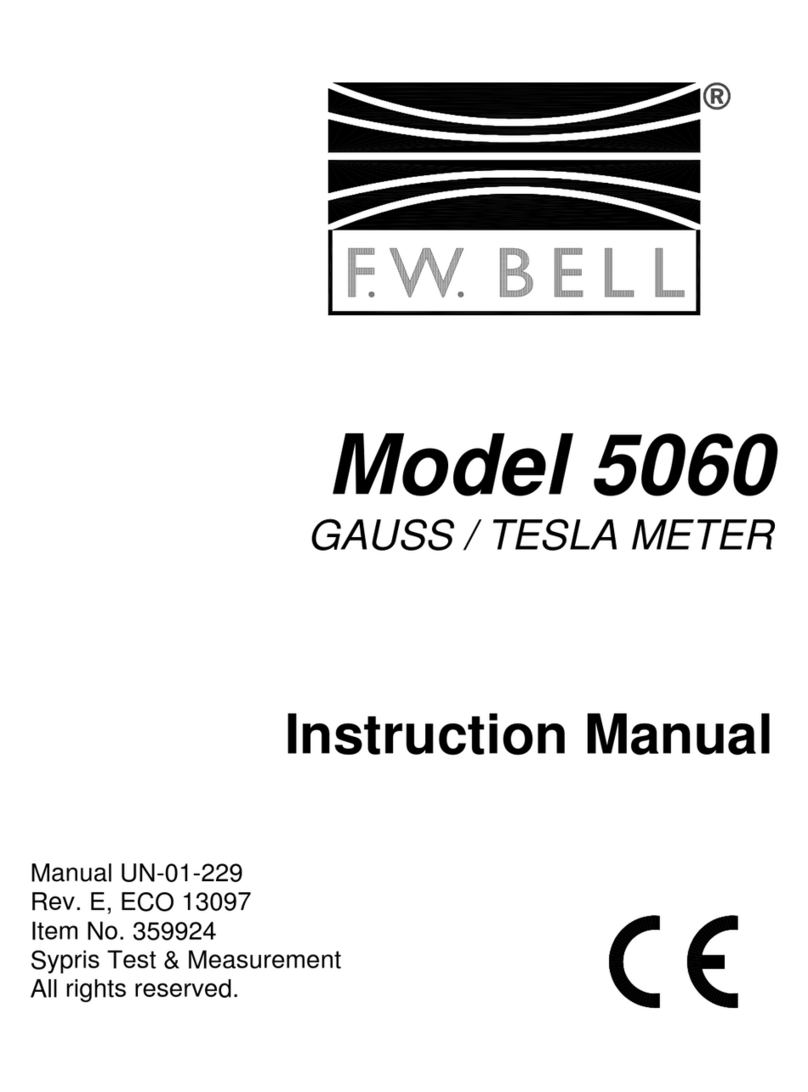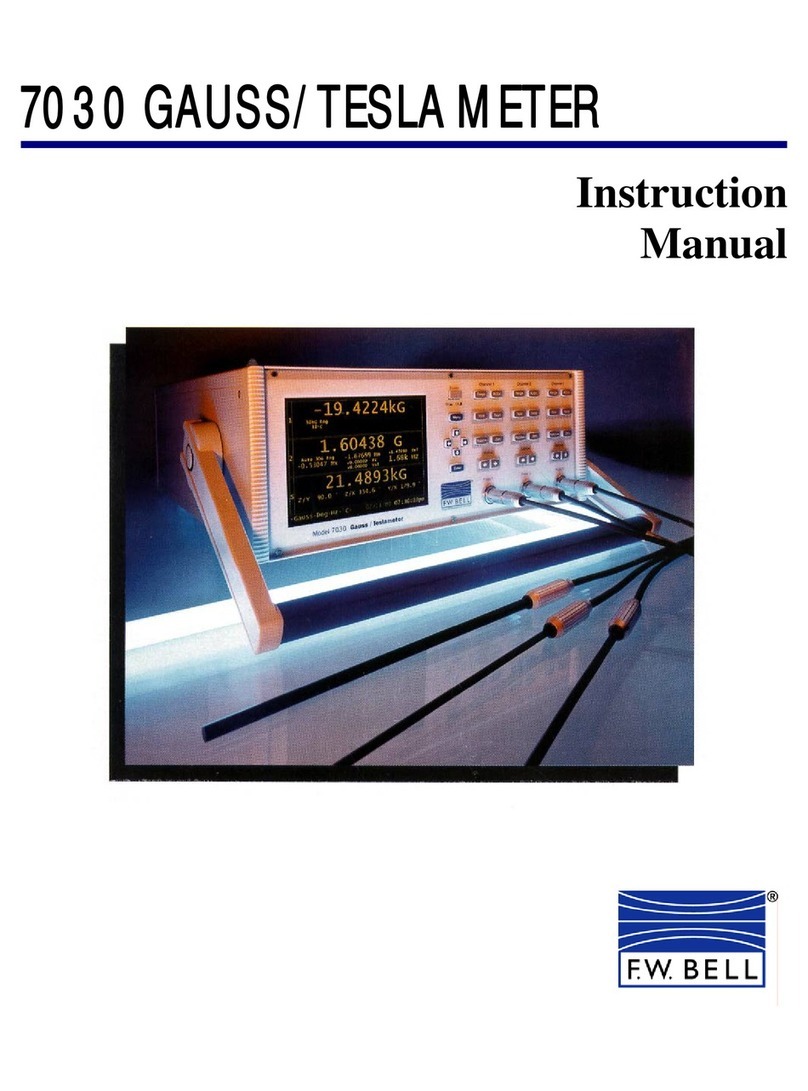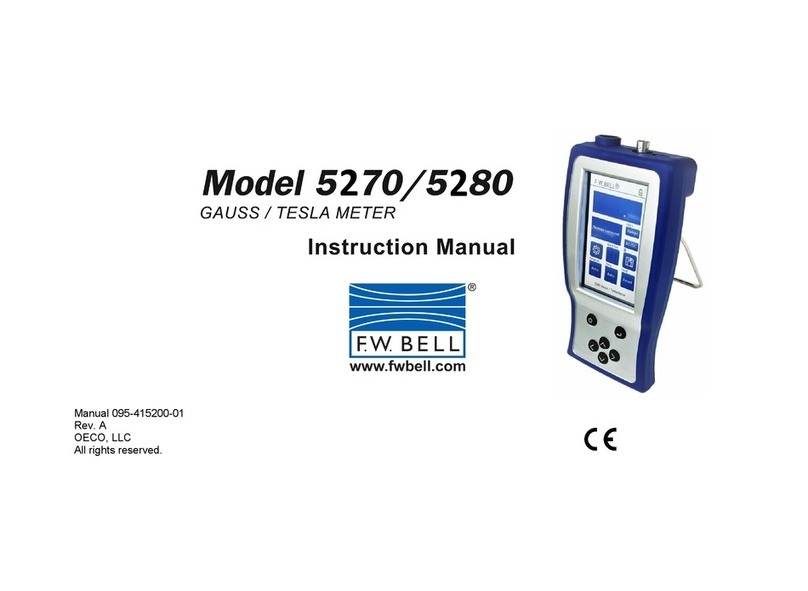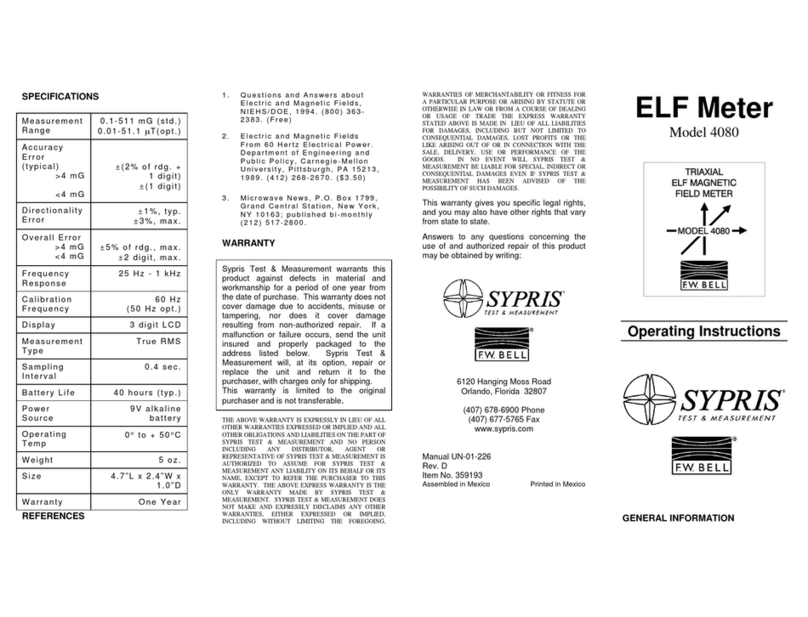
SERIES
9900 9000
SERIES
GAUSSMETERS
SIMPLIFIED
OPERATING
INSTRUCTIONS
FOR THE 9900
SERIES
GAUSSMETERS
1) Check the rear panel power receptacle to insure that the voltage showing
is the voltage you will be using, 115 volts ac or 230 volts ac. If it is necessary
to change this setting, refer to Section II-A.
2) With the power turned off, connect the required probes and probe
modules to the channels desired via the connectors on the front panel of the
gaussmeter. See Section II-B and II-C.
3) Connect power to the 9900 and turn on the instrument by locating the
Power Switch on the front panel and depressing the side marked 1.
NOTE: At turn-on, the screen should display a large F.W. Bell logo. Beneath
the logo, various messages will indicate the progress of the initialization. If any
error messages occur at this time, refer to Section VII, Diagnostic Error
Codes.
4) Assuming no error codes are present, the gaussmeter is now in the
MEASURE mode and will begin field measurements.
NOTE: All operating parameters such as range setting, peak/hold, classifier,
display format, communication format, etc... will be initialized to the same settings
that were present when the gaussmeter was last turned off.
5) Prior to making accurate readings, it is necessary to zero each probe by
following the procedures below:
a) Press the ENTER/PROGRAM pushbutton. The MAIN MENU will
appear.
b) Using the the up (T) and down (L) pushbuttons, advance the cursor to
PROBE ZERO function.
c) Press ENTER. The PROBE ZERO menu will appear.
d) Using the the up (T) and down (I) pushbuttons, advance the cursor to
the desired channel. Press ENTER.
e) Install the probe tip in the ZERO GAUSS CHAMBER located directly
below the display. Press ENTER.
f) The gaussmeter will proceed to zero the probe on each range setting for
either AC or DC operation, depending on the present mode setting.
g) Upon completion, the PROBE ZERO menu will reappear. Repeat steps
d-f for all remaining channels.
h) Advance the cursor to RUN. Press ENTER to resume field
measurements.
6) Consult Section IV for more information on MENU operations, or the
TABLE OF CONTENTS for references to other gaussmeter features.
NOTE: Greatest accuracy will be obtained after a 1-hour warm up period.
4


































